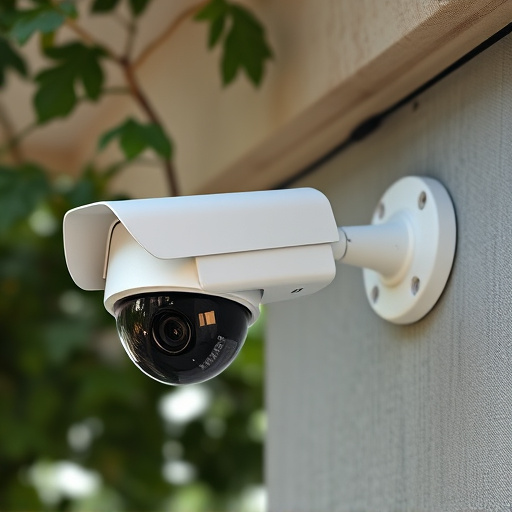Understanding the power needs of indoor dummy security cameras is key for optimal performance and strategic placement, with options like battery, hardwire, or solar charging catering to diverse mounting locations. Hallways, living rooms, kitchens, and bedrooms are ideal spots for these cameras, offering visibility, coverage, and a deterrence against intruders. The right power source enhances the realism of the setup, whether for homes or businesses, ensuring discreteness while maintaining security through temporary or permanent installations.
In today’s digital era, security cameras are a staple in home and business safety. For those looking to enhance their security without the cost and hassle of live surveillance, dummy security cameras offer a compelling alternative. This article delves into the world of indoor dummy camera mounting locations, exploring power options and the benefits they offer. From understanding power requirements to choosing the right setup, we’ll guide you through the process, highlighting popular indoor spots for these versatile devices.
- Understanding Dummy Security Camera Power Requirements
- Popular Indoor Mounting Spots for Dummy Cameras
- Advantages of Using Dummy Security Cameras
- Choosing the Right Power Source for Your Dummy Camera Setup
Understanding Dummy Security Camera Power Requirements
When it comes to dummy security cameras, understanding their power requirements is key to ensuring optimal performance and placement. These static cameras mimic real surveillance equipment but require specific power options to function effectively. The power sources can vary depending on the indoor mounting locations, which are often more accessible than outdoor counterparts. Common options include battery-powered models, hardwired systems, or even solar-charged alternatives for a truly wireless setup.
Indoor Dummy Camera Mounting Locations play a significant role in determining the suitable power solution. For example, cameras placed near electrical outlets can easily tap into existing power lines, while those in more remote areas might necessitate battery operation. Solar-powered models are ideal for hard-to-reach or outdoor locations, providing a sustainable and low-maintenance option. Understanding these power considerations ensures the camera’s longevity and reliability, making them an effective choice for enhancing home or business security without the complexities of live surveillance.
Popular Indoor Mounting Spots for Dummy Cameras
When it comes to indoor dummy camera mounting, there are several popular spots that offer optimal visibility and strategic coverage. Common locations include hallways, where they can monitor entrances and exits, and living rooms, perfect for capturing general activity within the space. Kitchens are also favored spots due to their high foot traffic and potential for detecting unusual sounds or movements related to food preparation or storage areas. Additionally, bedrooms can benefit from dummy cameras placed near doors or windows to ensure privacy and security while sleeping. These versatile indoor mounting locations allow homeowners to enhance their home’s safety and peace of mind with minimal disruption to daily routines.
Advantages of Using Dummy Security Cameras
Dummy security cameras offer several advantages, especially for those looking to enhance their home or business security without the cost and hassle of installing real cameras. One of the key benefits is their versatility in placement. These indoor dummy camera mounting locations can be strategically chosen to deter potential intruders, providing a sense of security. They can be placed in plain sight on walls, ceilings, or even inside cabinets, misleading would-be thieves into believing they are being watched.
This strategic deception can significantly reduce crime rates and act as a powerful deterrent. Unlike traditional security systems that require extensive wiring and professional installation, dummy cameras provide an easy, DIY solution. They are ideal for areas where the installation of real cameras might be impractical or expensive, such as narrow corridors, backyards, or offices with minimal budget allocations for security upgrades.
Choosing the Right Power Source for Your Dummy Camera Setup
When setting up a dummy security camera, selecting the appropriate power source is an essential step to ensure optimal performance and longevity of your device. The power options for indoor dummy cameras typically fall into two categories: hardwired and wireless. Hardwired cameras offer reliable power supply through an AC adapter or POE (Power over Ethernet) cable, making them ideal for fixed mounting locations such as walls or ceilings. This option provides consistent power, eliminating the need for frequent battery replacements, which is particularly advantageous for professional security systems.
On the other hand, wireless dummy cameras provide flexibility in terms of installation and movement. These cameras use batteries or rechargeable batteries, allowing them to be easily placed at various indoor mounting locations, including doors, windows, or even on tables as decoys. While battery-powered options may require more maintenance, they are perfect for temporary installations or areas where hardwiring is not feasible. With the right power source chosen, you can enhance the realism and effectiveness of your dummy camera setup, deterring potential intruders without drawing unnecessary attention.
When selecting a power source for your indoor dummy camera setup, consider the specific mounting location and energy demands. Popular indoor spots like walls or ceilings often offer convenient access to electrical outlets, ensuring a stable power supply. For unique or remote locations, wireless power options or rechargeable batteries can be game-changers, offering flexibility without messy cables. Choose a power source that aligns with your camera’s requirements and the aesthetic of your space, enhancing both security and ambiance at your desired indoor dummy camera mounting locations.
